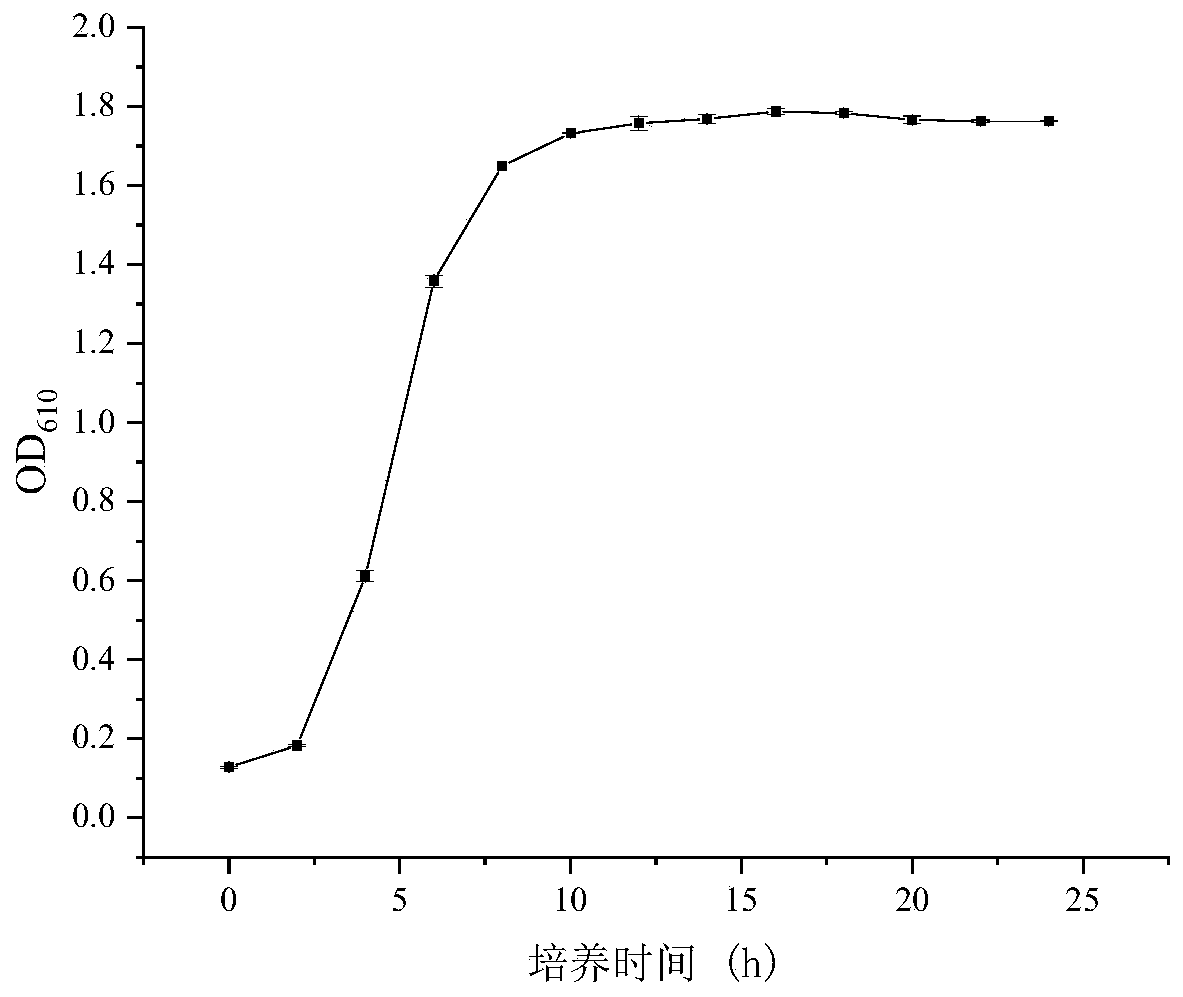Pediococcus acidilactici for enhancing flavour of fermented soy sauce
A technology of Pediococcus lactis and fermented sauce, which is applied in the field of microorganisms, can solve the problems of few types of flavor-enhancing bacteria and insufficient aroma of fermented sauce, and achieve the effect of improving the product aroma, increasing the types of flavor substances, and increasing the types and content of flavor substances
- Summary
- Abstract
- Description
- Claims
- Application Information
AI Technical Summary
Problems solved by technology
Method used
Image
Examples
Embodiment 1
[0046] Embodiment 1: Preparation of Pediococcus lactis high-density culture bacterial agent
[0047] (1) Preparation of seed solution: After activating the salt-tolerant Pediococcus lactis strain of the present invention, draw 10 mL of Piniang R036 seed solution and inoculate it into 3 L of MRS liquid medium, cultivate it in an incubator at 37°C for 18 hours, and the seed solution OD 610 value reaches around 2.0.
[0048] (2) Strain expansion cultivation: adopt 500L fermenter fermentation tank, 500LMRS substratum is sterilized standby, and sterilization condition is, temperature is 100 ℃, time is 60min, and the NaOH solution of 18% (w / v) is used to ferment liquid The pH was adjusted to 6.0. Then 3 L of the activated seed solution was inoculated into the above-mentioned culture medium, the culture temperature was 37° C., and the culture time was 18 h.
[0049] (3) Centrifugation and lyophilization: Centrifuge the fermented culture medium at low temperature to collect the tha...
Embodiment 2
[0051] The method that the Pediococcus lactis bacterial agent prepared in Example 1 is used to improve the quality of sweet petals, the specific steps are as follows:
[0052] 1 sweet petal prepared
[0053] (1) Hot petals: 5 kg of dried broad bean petals that have been shelled, remove impurities, add appropriate amount of boiling water to blanch for about 3 minutes, filter, and cool. The amount of boiling water added is subject to submerging the watercress.
[0054] (2) Koji making by inoculation: In terms of mass percentage, add flour with a mass of 17% of broad bean splits, add koji Shanghai brewing 3.042 with a mass of broad bean splits of 0.03‰; cultivate in a koji room with a humidity of 90% and a temperature of 37°C for 48 hours , and cultivated to turn over once every 12h.
[0055] (3) Sweet bean seed production: mix the prepared douban koji with salt water at a mass ratio of 1:1 (add salt and water at a time, and the final concentration of salt is 15%), and stir eve...
Embodiment 3
[0077] Example 3: Application of Pediococcus lactis Piniang R036 in the fermentation of high-salt dilute soy sauce fermented grains
[0078] 1. Pediococcus lactis enhanced soy sauce fermentation method
[0079] Steam the fully soaked soybeans, and after cooling, mix the cooked soybeans with flour at a mass ratio of 5:1, and add Aspergillus oryzae spore powder according to 0.03‰ of the total mass, and place the material at 35°C and a relative humidity of 90%. Cultured in an environment for 48 hours, the soy sauce koji was prepared, and the soy sauce koji was mixed with saline with a mass volume fraction of 25% according to a mass ratio of 1:3, and the Pediococcus lactis bacterial agent prepared in Example 1 was added to make Its final concentration is 10 7 CFU / g. Ferment at 30°C for 90 days, and filter to obtain soy sauce. According to the mass ratio of soy sauce fermented grains and salt water at 1:1, add salt water with a mass volume fraction of 15% to the head dregs, soak...
PUM
 Login to View More
Login to View More Abstract
Description
Claims
Application Information
 Login to View More
Login to View More - R&D
- Intellectual Property
- Life Sciences
- Materials
- Tech Scout
- Unparalleled Data Quality
- Higher Quality Content
- 60% Fewer Hallucinations
Browse by: Latest US Patents, China's latest patents, Technical Efficacy Thesaurus, Application Domain, Technology Topic, Popular Technical Reports.
© 2025 PatSnap. All rights reserved.Legal|Privacy policy|Modern Slavery Act Transparency Statement|Sitemap|About US| Contact US: help@patsnap.com



